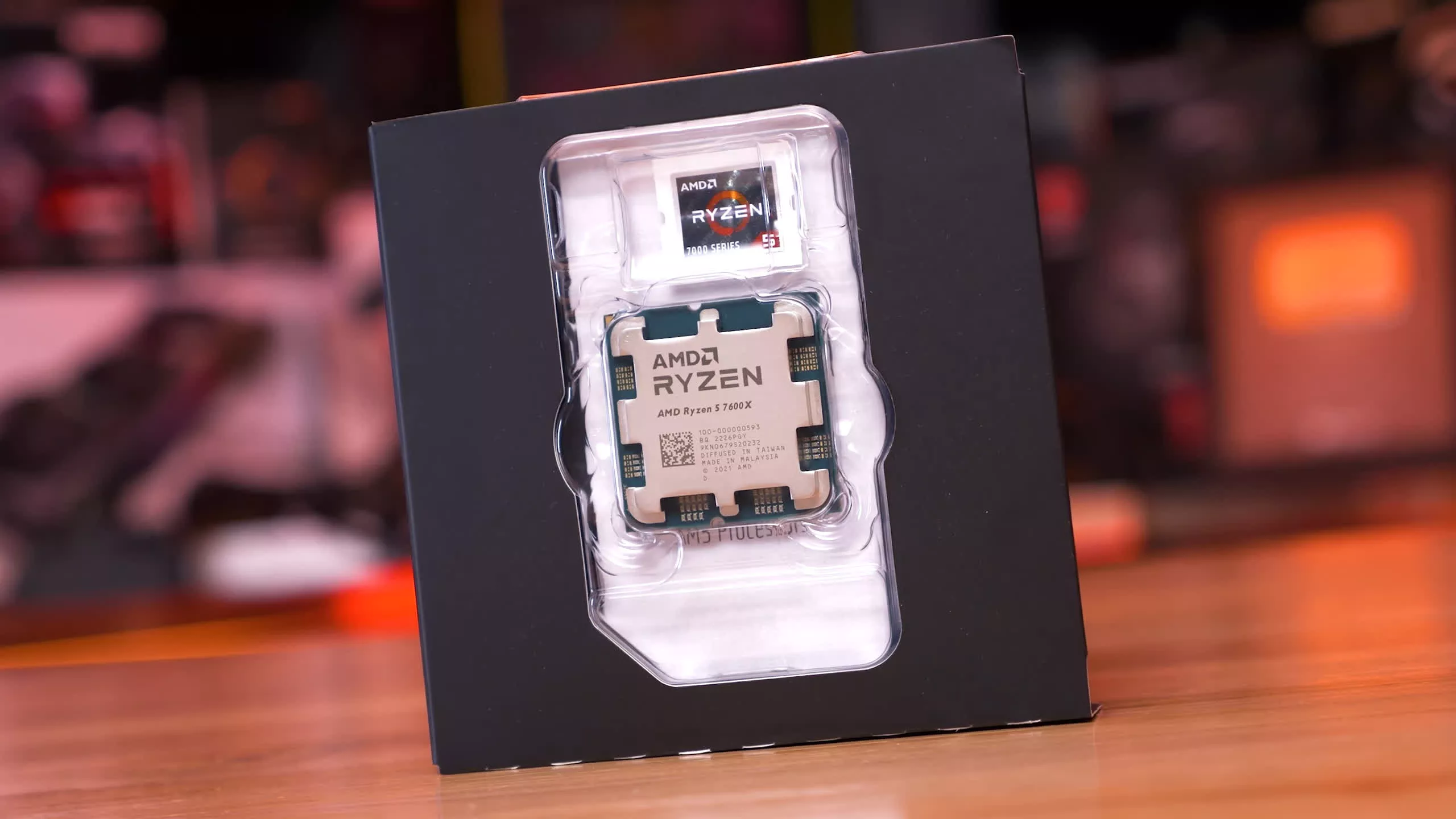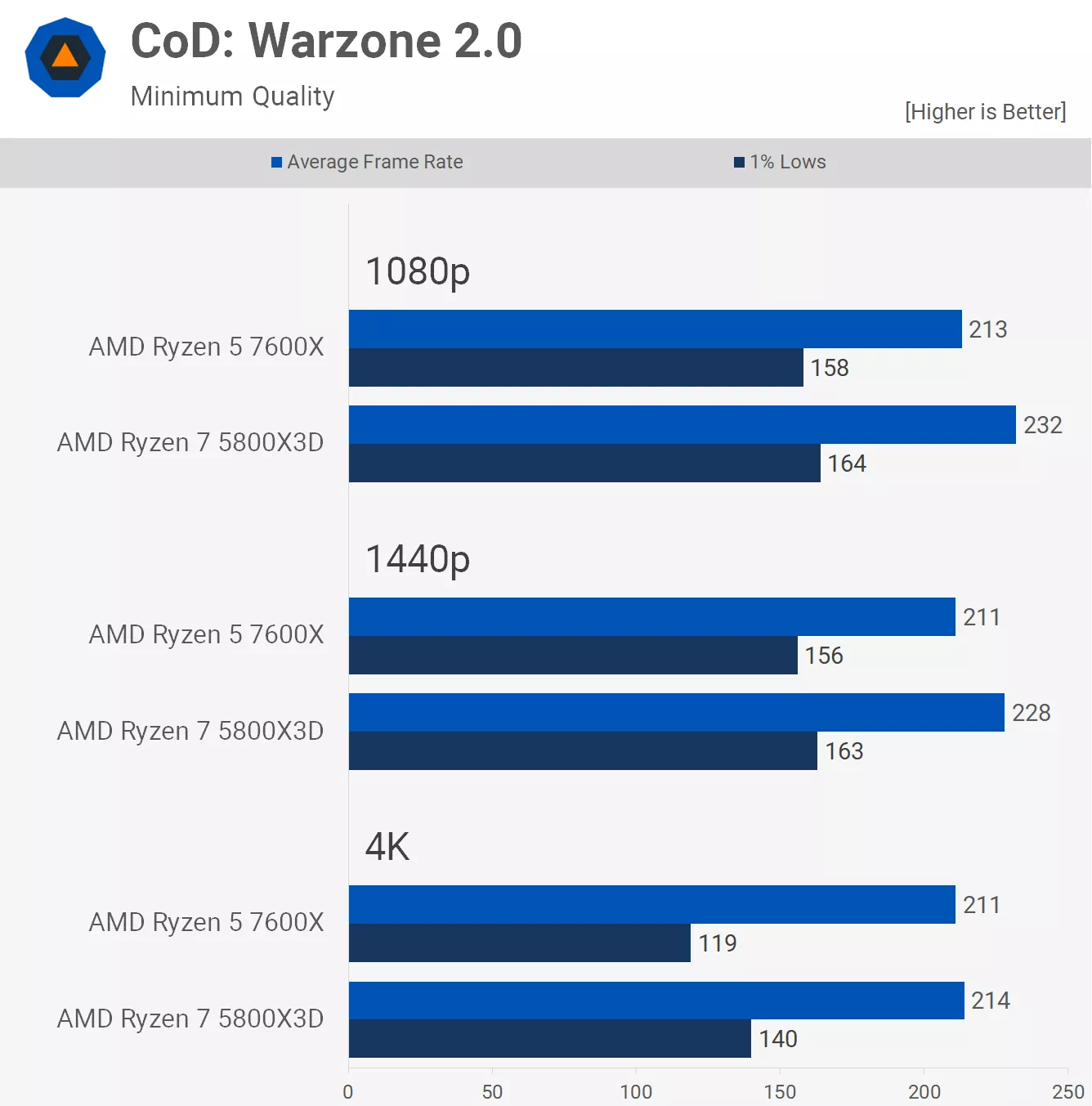Overall, I'd say that this comparison was very well done.
There is one part that I find a bit confusing however...
"Halo Infinite's performance was very similar using either CPU, though the 5800X3D was slightly faster at 1080p and 1440p, delivering 5% more performance.
Performance was nearly the same at the more GPU limited 4K resolution, though as was seen in F1 22 the 7600X was repeatedly slightly faster at the higher resolution."
The game referenced is
Halo: Infinite but the graph says
CoD: Warzone 2.0 with numbers that contradict what is said afterwards because it's quite clear that it's the R7-5800X3D that does better at 4K (all resolutions actually) while the words say that the R5-7600X did better at 4K. I don't know if the chart is wrong or the words are wrong. I expect that the words are wrong because not only does the chart say a different title, it also has different results.
Perhaps the chart from
Halo: Infinite was accidentally omitted along with the verbal synopsis of
CoD: Warzone 2.0 which could explain what we see here.
Either way, I'm glad to see such incredible gaming performance is still possible with the R7-5800X3D on the AM4 platform because that's what I have. I expect that my current platform will be viable for many years to come with regard to gaming. Considering what new parts cost, it's quite a comfort to know that by the time I need to upgrade, all of this outrageous tech pricing will have long since calmed down and even what would be considered outdated by then would still be a significant upgrade.
I would point out that the B450 and B550 chipsets would be a waste of money on a new AM4 build with an R7-5800X3D because it can't be overclocked anyway and there is little chance that a gamer would upgrade to a 12 or 16-core AM4 CPU down the road. They'd be completely outclassed by modern parts and wouldn't be worth the money. If a new AM4 build is done, the R7-5800X3D will more than likely be the only CPU that it ever sees.
This makes the "lowly" A520 chipset much more attractive because you don't need fancy VRMs for a 105W CPU that's only running at stock. Anyone who wants to make a new AM4 gaming build is doing so for budgetary reasons which makes the A520 chipset even more applicable and attractive.
We can see here how that plays out:
CPU:
R7-5800X3D - $340
Mobo:
Asus PRIME A520M-A II/CSM - $80
RAM:
Silicon Power GAMING 32 GB (2 x 16 GB) DDR4-3200 CL16 - $68
Total: $488
So, that's a savings of at least $82 up to a savings of $132. That's a considerable chunk of change to put towards improving whatever video card will be used. I would say that the increased GPU budget would have a much more profound effect on gaming performance than having a B550 chipset. In fact, I would argue that it wouldn't even be close. I'm ignoring the B450 chipset because there's no guarantee that the BIOS will recognise a Ryzen 5000 CPU right out of the box.
Let's say for the sake of argument that the budget for the platform and GPU is $1000 (just because it's a nice, round number). This leaves $512 for the video card if you choose an A520 motherboard but only $430 at best to $380 at worst if you take the B450/B550 route.
Looking at what's out there, both B550 configurations allow for an RX 6750 XT:
Best for cheap B550:
ASRock Phantom Gaming D Radeon RX 6750 XT - $430
Best for expensive B550:
GIGABYTE Gaming OC Radeon RX 6750 XT - $380
They're ironically
exactly what the two budgets had so there's no significant difference between them since they can both accommodate an RX 6750 XT.
However, the savings incurred by going with an A520 motherboard change what's possible from an RX 6750 XT to an RX 6800:
ASRock Radeon RX 6800 Phantom Gaming D - $510
Ironically, this is
also at pretty much
exactly the remaining budget (with $2 left over).
According to TechPowerUp, the RX 6800 is 17% faster than the RX 6750 XT and also has four extra gigabytes of VRAM.
I would say that my configuration would easily give the best gaming performance at $1000 or less for the core components of CPU, GPU, Motherboard and RAM. Now, don't get me wrong, I wouldn't recommend this over an AM5 build unless you're so strapped for cash that the AM5 build would be untenable. With prices as low as they are, it might even be worth it over an LGA 1700 build.

